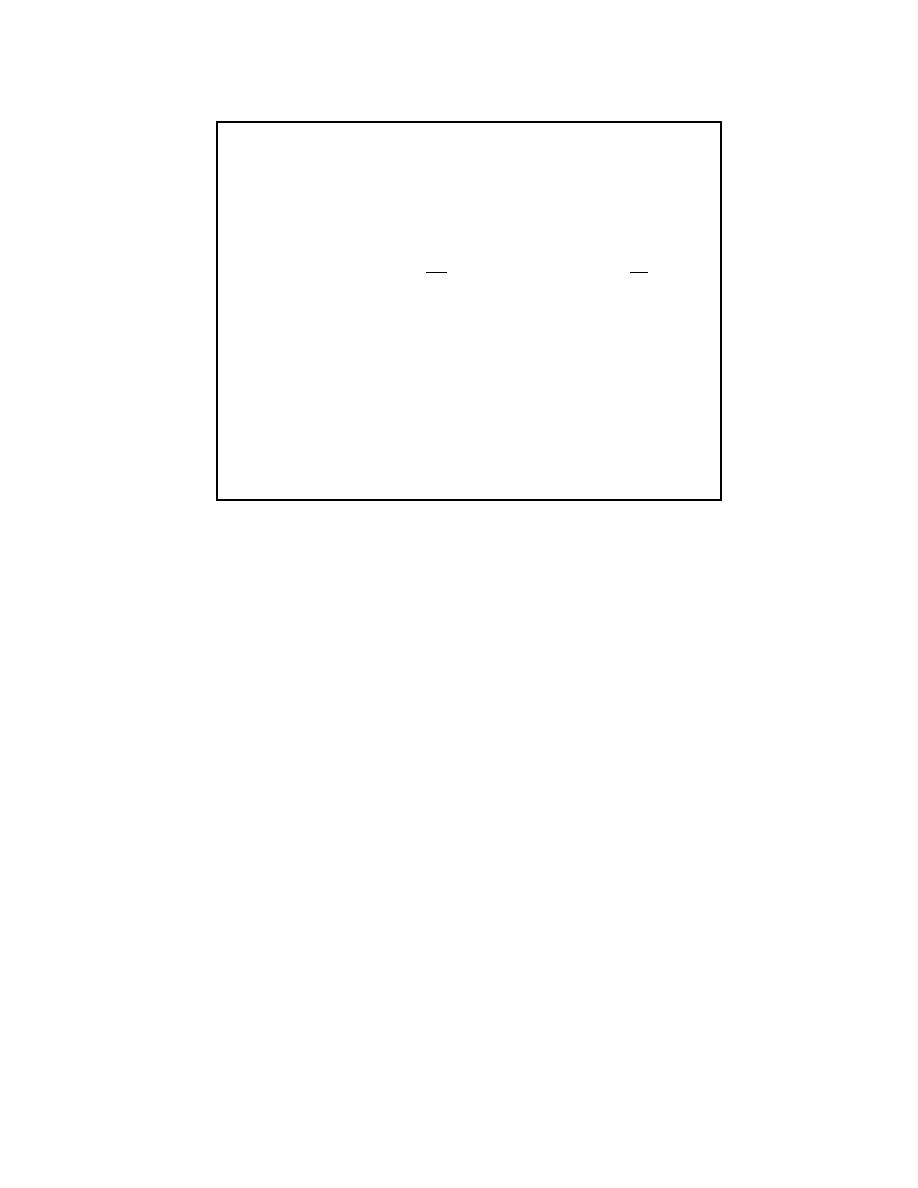
Table 4
PERCENT CHANCE OF DESIGN EVENT OCCURRENCE
Project Life
Design Condition Return Period
(years)
(years)
10
25
1
10
4
2
19
8
5
41
18
10
65
34
15
79
46
20
88
56
25
93
64
30
96
71
40
99
80
50
99
87
Returning to the problem of the design wave, the critical fetch must be identified before it is
possible to calculate the wave height. Fetch length is the distance across water that wind blows to
generate waves. At a constant wind speed, the longer the fetch, the larger the generated waves, up to an
equilibrium point beyond which there is no further wave growth unless the wind speed increases. Figure
17 shows a proposed site for a shore protection project. The critical fetch must be determined in order to
estimate the design wave height. The longest fetch is labeled (1) the figure. Line (2), although shorter
than Line (2) crosses significantly deeper water.
In general, greater depths along the fetch will cause greater wave heights because of decreased
bottom frictional effects. The fetch lines on Figure 17 have been divided into a series of equal length
segments. As shown on the figure, by noting the depth at each division point, the average depth along
the fetch can be determined. Care should be taken, however, to avoid including depths which
are the
result of small-scale depressions or rises, that are not typical of the area, but which the fetch line happens
to cross. Small features such as rocks would not significantly affect wave growth and should be excluded
in favor of a depth that is more typical to that area. The average depth must also be adjusted to
correspond with the design water level. If, for instance, the design water level is +2.8 feet MLW, then
the average fetch depth would be 10.0 feet for Line (1) and 14.4 feet for Line (2).
The final step in determining wind-driven wave heights is to refer to Tables 5, 6, 7, 8, and 9, and
select the tables that bracket the average fetch depth. The wave height can then be found by using the
fetch length and the fastest-mile wind speed. In the example, fetch line was 3.2 miles long with an
average depth of 10.0 feet (design water level at +2.81 MLW). Assuming a 10-year, fastest-mile wind
speed of 65 mi s/hour, the wave height would be 3.0 feet (Table 6). Along Line with an average depth of
14.4 feet, the wave height would b .5 feet (interpolating between Tables 6 and 7), despite the fact that its
fetch length is only 2.4 miles. This should be used for design. The wave periods are given in
parentheses on the tables below the wave heights. In both cases, the wave period is 4.0 seconds.
40



 Previous Page
Previous Page
